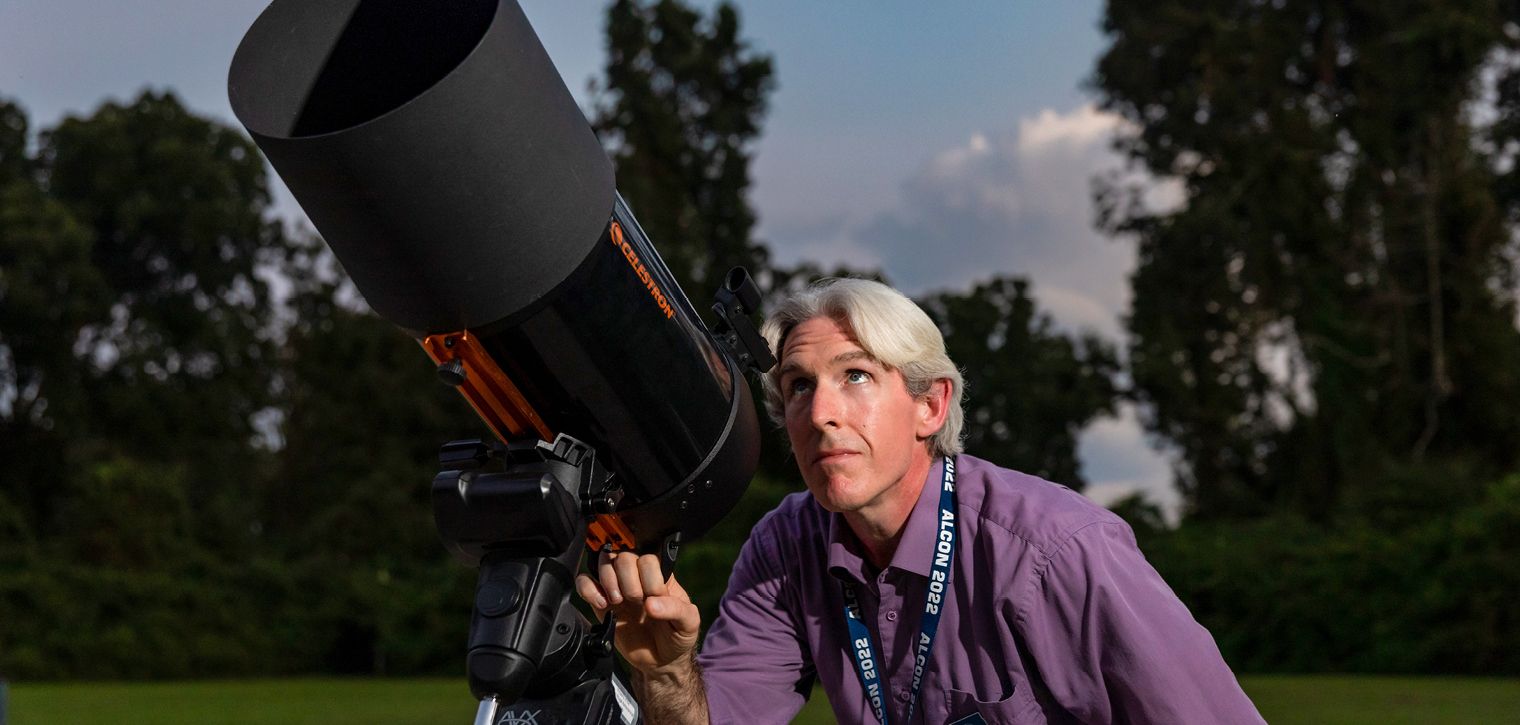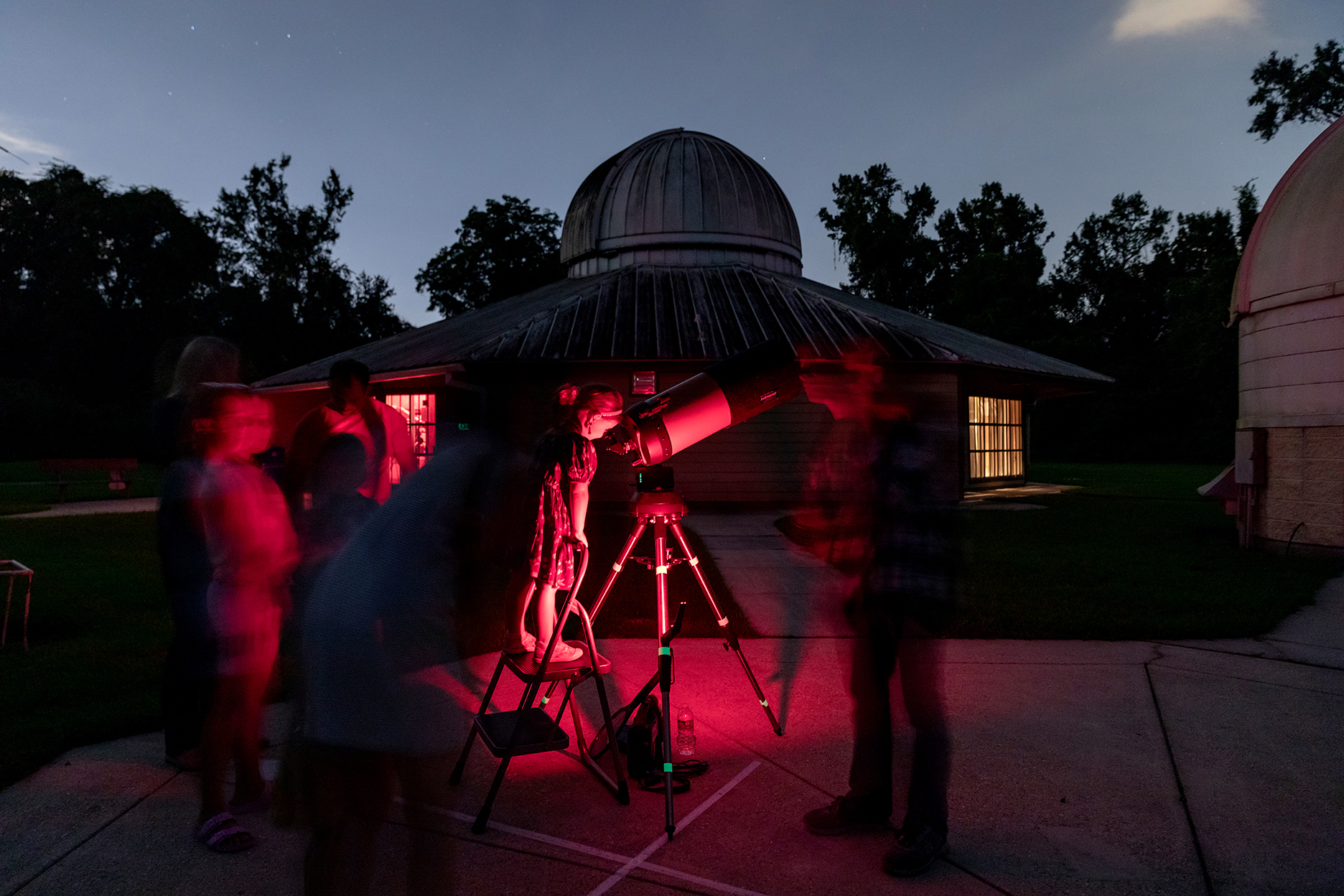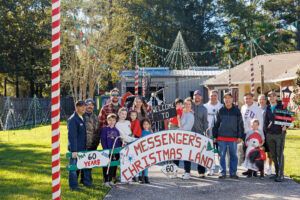
For the Baton Rouge Astronomical Society, the sky is the limit
On an ordinary night in the fall of 1609, Galileo Galilei stepped out into the Italian air with a new invention. To most onlookers, it was a mere wooden tube—a strange musical instrument, perhaps. But after situating the end of the thin staff against his eye, Galileo looked up and turned his gaze to the moon, where he found not just a bright white orb, but a whole landscape of mountains, domes and craters: another world.
The field of astronomy would never be so simple again. And yet, the twinkling specks of our own Milky Way remain a source of wonder even for those of us stranded at sea level—especially for members of the Baton Rouge Astronomical Society.
Founded in 1981, the group of 80 to 100 amateur stargazers and astrophotographers has long taken advantage of darker skies to forge connections with the local community. Season after season, they’ve hosted regular public meetings at the Highland Road Park Observatory, organized “star parties” away from city lights, and invited passersby to share views through their telescopes during events like the Sidewalk Astronomy series at Perkins Rowe, which will next take place on October 4. Now under the leadership of president John Nagle, the organization continues to challenge its members to look beyond the horizon for a chance to feel part of something bigger than themselves.
“Astronomy is one of the few areas of science in which amateurs can work with professional scientists and contribute to their studies,” says Nagle. “It can teach history and mythology from all over the world, and it can also lead someone into learning various disciplines of science, from nuclear physics to chemistry to geometry.”
One of the greatest benefits of stargazing is simply enjoying the beauty of space and contemplating our place in the cosmos. And for members like outreach chairperson Ben Toman, who grew up in the more elevated climes of Michigan, not even the low latitude can get in the way of seeking the stunning sights hovering just overhead.
“There are tradeoffs in each season,” Toman says. “Summertime is our burden to bear here in south Louisiana, thanks to the humidity and the sun not setting until later, but summer constellations like Sagittarius will have you looking straight into the center of the galaxy, where you can see beautiful nebula galaxy clusters and globular star clusters—lots of cool stuff.”

Although traveling 20 to 30 miles outside Baton Rouge will bring viewers to society-favorite viewing spots in places like Maringouin and around the Atchafalaya Basin, this time of year still offers plenty of views for the naked eye within the city limits. As the weather turns cooler, winter objects like the constellation Orion will be easy to spot, says Toman, and can lead viewers to the swirling gasses of the great Orion Nebula. Jupiter, Saturn and Mars will all be visible in the sky during the fall and winter months.
“For amateur astronomers, I recommend starting with the moon, because you can see it in spite of any light pollution,” says Toman. “Just remember that the best time to look is actually when it’s in phase, not full, because the sun will be hitting it at an angle and you can see all the craters and shadows much better.”
Even a pair of binoculars is helpful when viewing the night sky, while modest telescopes from stores like Walmart can pack a surprising punch. A little extra telescopic oomph can go a long way, though. Just ask the society’s communications coordinator Scott Cadwallader, whose photos of comets and other celestial sights like planets and sunspots can be seen along with other members’ own snaps online and on Facebook—some of which were taken with only a cell phone held up to the lens of a telescope.
“Those are some of the fun things we like to do with our Sidewalk Astronomy sessions,” Cadwallader says, noting that additional outreach events are often held at Baton Rouge libraries and at local makers markets. “We have devices that can be hooked up to the eyepiece to adjust the brightness and exposure, so people can walk away from these events with really cool photos to share with their friends and family.”
One Saturday each month, the society also teams up with the observatory for “Plus Nights,” where the public can enjoy marshmallow roasts and themed viewings depending on what may be visible in the night sky, from “The Ringed Beauty” to “The Icy Outposts.” This month, the society and the observatory will replace the usual Plus Night with a kid-friendly “Spooky Spectrum” event on October 8, during which visitors can see viewing demonstrations, enjoy food and games, and have a chance to chat with society members.
“The Highland Road Park Observatory and our partnership with BREC and LSU are definitely things that other astronomy communities are jealous of us for,” says Cadwallader.
These space-savvy astronomers have learned to wrangle the Louisiana skies, and look forward to sharing their knowledge for years to come. “They say that the Indian mounds on LSU’s campus are some of the oldest manmade structures in North America, and sure enough, they might have had some astronomical significance,” says Cadwallader. “People may think that Louisiana isn’t the best place to do astronomy, but if people have been doing this here for thousands of years, I’d say that’s proof that you just need to know what to look for.”











